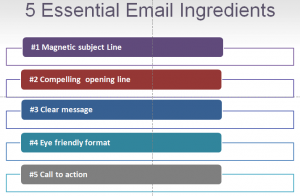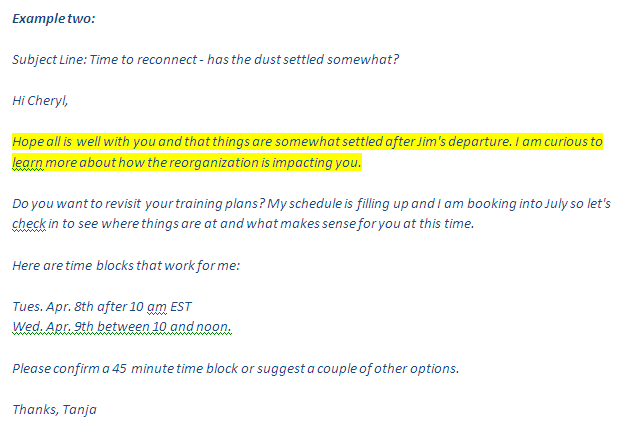
Email Persuasion Tip #2: Create a Compelling Opening
 The #1 essential ingredient of writing effective emails is to create a magnetic subject line that compels your clients to promptly open your email.
The #1 essential ingredient of writing effective emails is to create a magnetic subject line that compels your clients to promptly open your email.
The #2 key is crafting a compelling opening sentence. This is so important, yet many people start off on the wrong foot. They forget to put the reader’s needs first, what’s important to them, and what will make them hungry to find out what your email says.
Once opened, the goal is to pull your client into the copy, compel them to keep reading to the end and act on your Call to Action. But what you say in your email opening will make or break success.
Never forget that your clients can often see the first few lines of your email in their Outlook folder or on their smart phone before they decide to open it. Without a compelling opening, they won’t even open your email, or your client won’t open it up right away. So it better be good!
Tips for Creating a Compelling Opening
The biggest blunder you can make is to make your opening line about yourself. Starting off with “I or we” will not draw your reader in. Follow the ‘You’ Principle and make it about them. Your reader will resonate with your words and read on. Your opening line can include:
- A repeat or continuation from your subject line
- A brief rapport statement that establishes connection and commonality – this could be a reference to a common experience or person
- Sense of urgency
- A question that relates to the purpose of the email
In the following examples I have highlighted in yellow where I have applied some of the above principles for email subject lines and openings.


In the above examples, the opening lines are continuations of the subject line, the ‘you principle’ is applied with the focus of attention on the reader (“you suggested” in example #1, curiosity about impact of reorganization in example #2), and a sense of urgency is created (risk of underperformance if poor execution not addressed in example #1, training calendar is booking far out in example #2).
In my next post I will deconstruct the formula for Essential Ingredient #3: Creating a Clear Message.






Let’s Connect